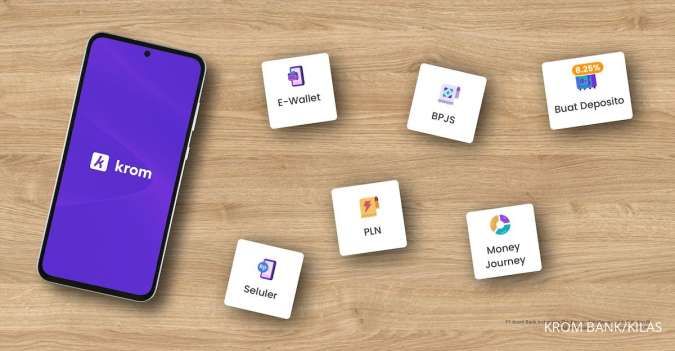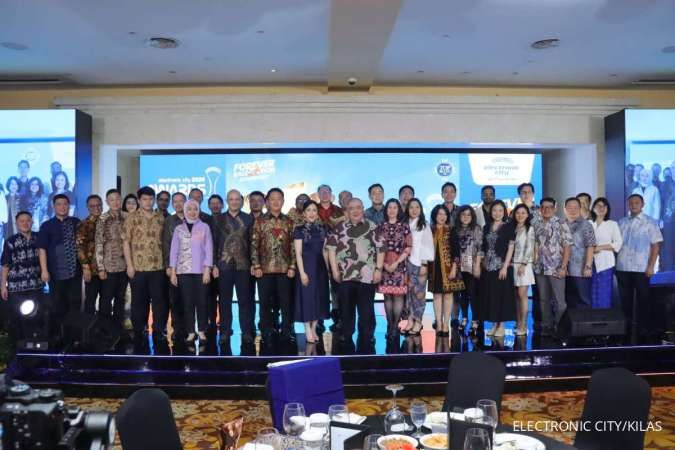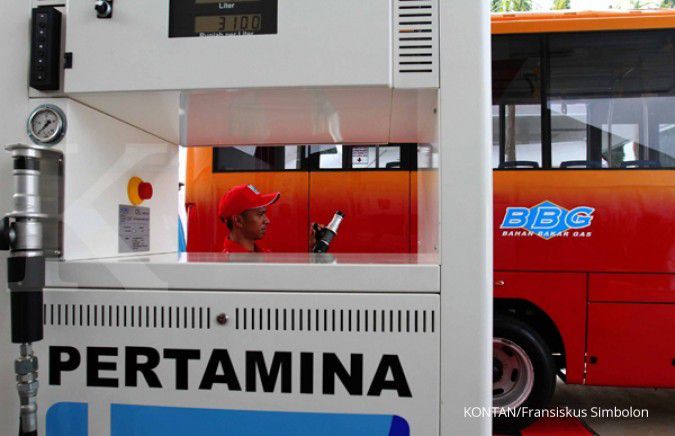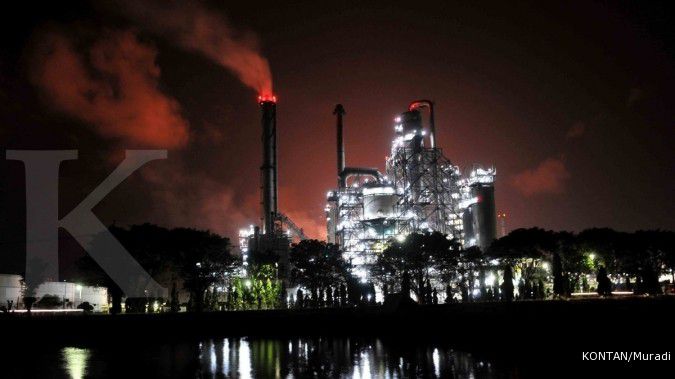JAKARTA. Domestic buyers are expected to absorb more liquefied natural gas (LNG) this year, following the operation of new facilities to process and deliver the gas. The Upstream Oil and Gas Regulatory Task Force (SKKMigas) head, Rudianto Rimbono, said as many as a 258 cargoes of LNG would be produced by plants in the country this year, lower than the 298 output last year. The lower production was mainly due to reduced supply from gas fields. Despite lower total output, the allocation for the domestic market would be doubled. “This year, as many as 58 cargoes will be delivered to the domestic market,” Rudianto said on Wednesday. This is about 87 percent higher than the 31 delivered to the domestic market in 2014. Buyers of LNG on the domestic market include state-owned oil and gas giant PT Pertamina, electricity company PT PLN, gas distributor PT PGN and PT Nusantara Regas. The higher absorption would be supported partly by the commercial operation of a floating storage and regasification unit (FSRU) in Lampung, operated by PGN, and the operation of a regasification plant in Arun, Aceh. FSRU Lampung kicked off its commercial operation in the second semester last year and received four LNG cargoes. “This year, the Lampung FSRU is expected to be able to absorb up to 11 cargoes,” PGN’s head of external communication, Irwan Andri Atmanto, said. Meanwhile, Arun regasification unit is scheduled to receive LNG cargoes from Tangguh plant in Papua starting this January. Indonesia is thought to have significant gas resources and reserves, making it a major exporter of LNG. As part of the attempts to reduce dependency on the oil fuel supply, the government has been calling for higher utilization of gas in the country, including to generate electricity and in industry, such as the fertilizer sector. However, domestic absorption is hampered by a lack of infrastructure to support deliveries. Moreover, local buyers often fail to meet their LNG absorption goals. For example, the Lampung FSRU was allocated five cargoes last year, however, due to delayed commercial operation, it was only able to absorb four. The below-target absorption also caused the country to look to the LNG spot market to sell unabsorbed LNG. SKKMigas head of communication and protocol, Zuldadi Rafdi, said there were five cargoes of LNG unabsorbed last year, which were put on auction in August. However, according to Zuldadi, a successful purchase was achieved in October but the buyers only wanted two cargoes. “The price is far lower than estimations and therefore the cargoes could not be sold. As a consequence of the remaining three cargoes, production [in related gas fields] had to be curtailed,” he said. Sources in the oil and gas industry familiar with the matter said that the curtailed production was far higher than SKKMigas reported, reaching 11 cargoes. (Raras Cahyafitri)
Domestic buyers to get bigger LNG supply
JAKARTA. Domestic buyers are expected to absorb more liquefied natural gas (LNG) this year, following the operation of new facilities to process and deliver the gas. The Upstream Oil and Gas Regulatory Task Force (SKKMigas) head, Rudianto Rimbono, said as many as a 258 cargoes of LNG would be produced by plants in the country this year, lower than the 298 output last year. The lower production was mainly due to reduced supply from gas fields. Despite lower total output, the allocation for the domestic market would be doubled. “This year, as many as 58 cargoes will be delivered to the domestic market,” Rudianto said on Wednesday. This is about 87 percent higher than the 31 delivered to the domestic market in 2014. Buyers of LNG on the domestic market include state-owned oil and gas giant PT Pertamina, electricity company PT PLN, gas distributor PT PGN and PT Nusantara Regas. The higher absorption would be supported partly by the commercial operation of a floating storage and regasification unit (FSRU) in Lampung, operated by PGN, and the operation of a regasification plant in Arun, Aceh. FSRU Lampung kicked off its commercial operation in the second semester last year and received four LNG cargoes. “This year, the Lampung FSRU is expected to be able to absorb up to 11 cargoes,” PGN’s head of external communication, Irwan Andri Atmanto, said. Meanwhile, Arun regasification unit is scheduled to receive LNG cargoes from Tangguh plant in Papua starting this January. Indonesia is thought to have significant gas resources and reserves, making it a major exporter of LNG. As part of the attempts to reduce dependency on the oil fuel supply, the government has been calling for higher utilization of gas in the country, including to generate electricity and in industry, such as the fertilizer sector. However, domestic absorption is hampered by a lack of infrastructure to support deliveries. Moreover, local buyers often fail to meet their LNG absorption goals. For example, the Lampung FSRU was allocated five cargoes last year, however, due to delayed commercial operation, it was only able to absorb four. The below-target absorption also caused the country to look to the LNG spot market to sell unabsorbed LNG. SKKMigas head of communication and protocol, Zuldadi Rafdi, said there were five cargoes of LNG unabsorbed last year, which were put on auction in August. However, according to Zuldadi, a successful purchase was achieved in October but the buyers only wanted two cargoes. “The price is far lower than estimations and therefore the cargoes could not be sold. As a consequence of the remaining three cargoes, production [in related gas fields] had to be curtailed,” he said. Sources in the oil and gas industry familiar with the matter said that the curtailed production was far higher than SKKMigas reported, reaching 11 cargoes. (Raras Cahyafitri)





